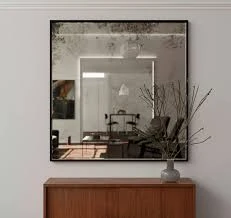

The Enigmatic Beauty of a Float Mirror Reflections on Design and Functionality
In the realm of interior design, few elements possess the ability to transform a space as effectively as a mirror. Among the various types of mirrors, the float mirror stands out for its unique aesthetic and versatile functionality. This article delves into the allure of float mirrors, exploring their design features, practical benefits, and their role in enhancing our living spaces.
Float mirrors, characterized by their sleek and minimalist design, are often made using high-quality glass that is carefully polished to provide an impeccable reflection. One of the defining features of float mirrors is their thin profile, which allows them to blend seamlessly into any decor style without overwhelming the surrounding elements. This simplicity and elegance make float mirrors a popular choice for contemporary interiors, where clean lines and understated sophistication reign supreme.
The construction of a float mirror involves a unique manufacturing process known as float glass production. During this process, molten glass is floated on a bed of molten tin, creating a smooth and homogeneous surface. This technique not only results in a pristine finish but also enables the mirror to exhibit remarkable clarity and durability. The quality of reflection in a float mirror is superior, allowing light to bounce effortlessly throughout a room, creating an open and airy feel.
Beyond their aesthetic appeal, float mirrors serve practical purposes in our daily lives. They are invaluable tools for grooming and personal care, often found in bathrooms and dressing areas. The positioning of float mirrors can significantly influence our perception of space; strategically placing them can create the illusion of greater room dimensions and enhance natural light exposure. In smaller spaces, for example, a well-placed float mirror can reflect light from windows, making the room feel brighter and more expansive.

Moreover, float mirrors can act as dynamic art pieces. When hung in unconventional locations or incorporated into gallery walls, they can serve as focal points that captivate the eye. Their reflective surfaces can interact with other artworks and decorative elements, creating a harmonious play of light and reflection. This versatility allows float mirrors to contribute to a room’s narrative, whether it be serene, vibrant, or eclectic.
In terms of maintenance, float mirrors are relatively low-maintenance. Regular cleaning with a soft cloth and a gentle glass cleaner helps maintain their pristine condition and ensures that their reflective properties are preserved. This ease of upkeep only adds to their appeal, making them an accessible choice for homeowners who wish to enhance their interiors without demanding a significant time investment in cleaning and care.
As we consider the essential role of float mirrors in our living spaces, it becomes evident that they are not merely functional items but also artful components of design. From their elegant construction and reflective qualities to their ability to transform the perception of space, float mirrors invite us to reflect, both literally and metaphorically. They encourage us to think about how we inhabit our spaces and how light and reflection play into our daily lives.
In conclusion, float mirrors epitomize the intersection of beauty and utility in interior design. Their understated elegance and practical benefits enhance both the aesthetic and functional qualities of our spaces. As we continue to explore innovative design trends, the float mirror remains a timeless choice that invites creativity, enhances light, and encourages personal reflection, making it a must-have element in modern homes. Whether used alone or as part of a larger design scheme, float mirrors have a unique ability to enrich our surroundings and elevate our everyday experiences.